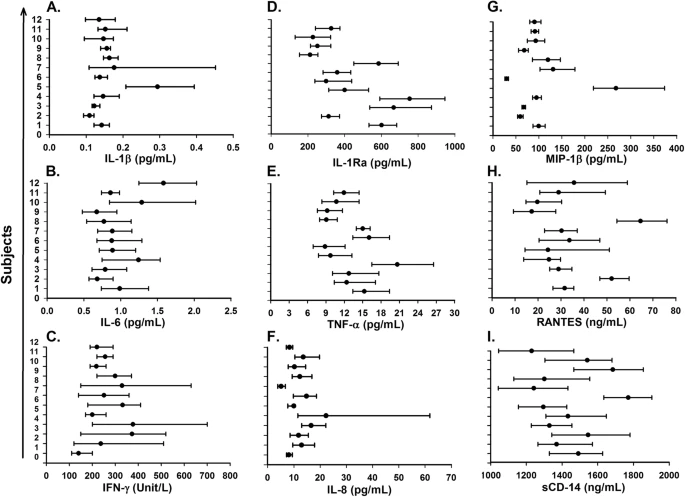- BMC Immunology Research article
- Open Access
BMC Immunology 20, Article number: 33 (2019)
Abstract
Background
Cytokines, chemokines, adipocytokines, soluble cell receptors, and immune activation markers play an important role in immune responsiveness and can provide prognostic value since they reflect underlying conditions and disease states. This study was undertaken to investigate the components of biological variation for various laboratory tests of blood immunological biomarkers.
Results
Estimates of intra-individual coefficient of variation (CVI) and inter-individual coefficient of variation (CVG) were examined for blood immunological biomarkers. Biomarkers with CVI < 10% for both genders were CD3, CD4, and CD8 T-cells, serum levels of soluble cluster of differentiation 14 (sCD14), sCD163, and soluble glycoprotein 130 (sgp130). The CVI for serum levels of adiponectin, interleukin-1 receptor antagonist (IL-1Ra), macrophage inflammatory protein 1 beta (MIP-1β), soluble CD40 Ligand (sCD40L), soluble interleukin-2 receptor alpha (sIL-2Rα), soluble interleukin-6 receptor (sIL-6R), soluble tumor necrosis factor receptor II (sTNF-RII), and tumor necrosis factor alpha (TNF-α) were between 11 and 20%. Biomarkers with CVG < 20% were CD3 T-cell, and serum concentrations of sCD14, sCD40L, and sgp130. The biomarkers with CVG > 40% were adiponectin, IL-1ra, leptin, MIP-1β, sCD163, and sIL-2Rα.
Conclusion
The biological variations of biomarkers have important monitoring value for longitudinal investigation and are essential for quality specification of tests that are performed in the laboratory. The CVI was relatively small while CVG was comparatively large and mean values of each biomarker vary between subjects. The individuality of biomarkers significantly influences reference interval values. A majority of the biomarkers in this study had strong individuality and the result of each biomarker should be cautiously interpreted if using established reference interval values. Comparison of a patient’s test result with previous ones may be more useful than the usage of conventional reference values.

No comments:
Post a Comment